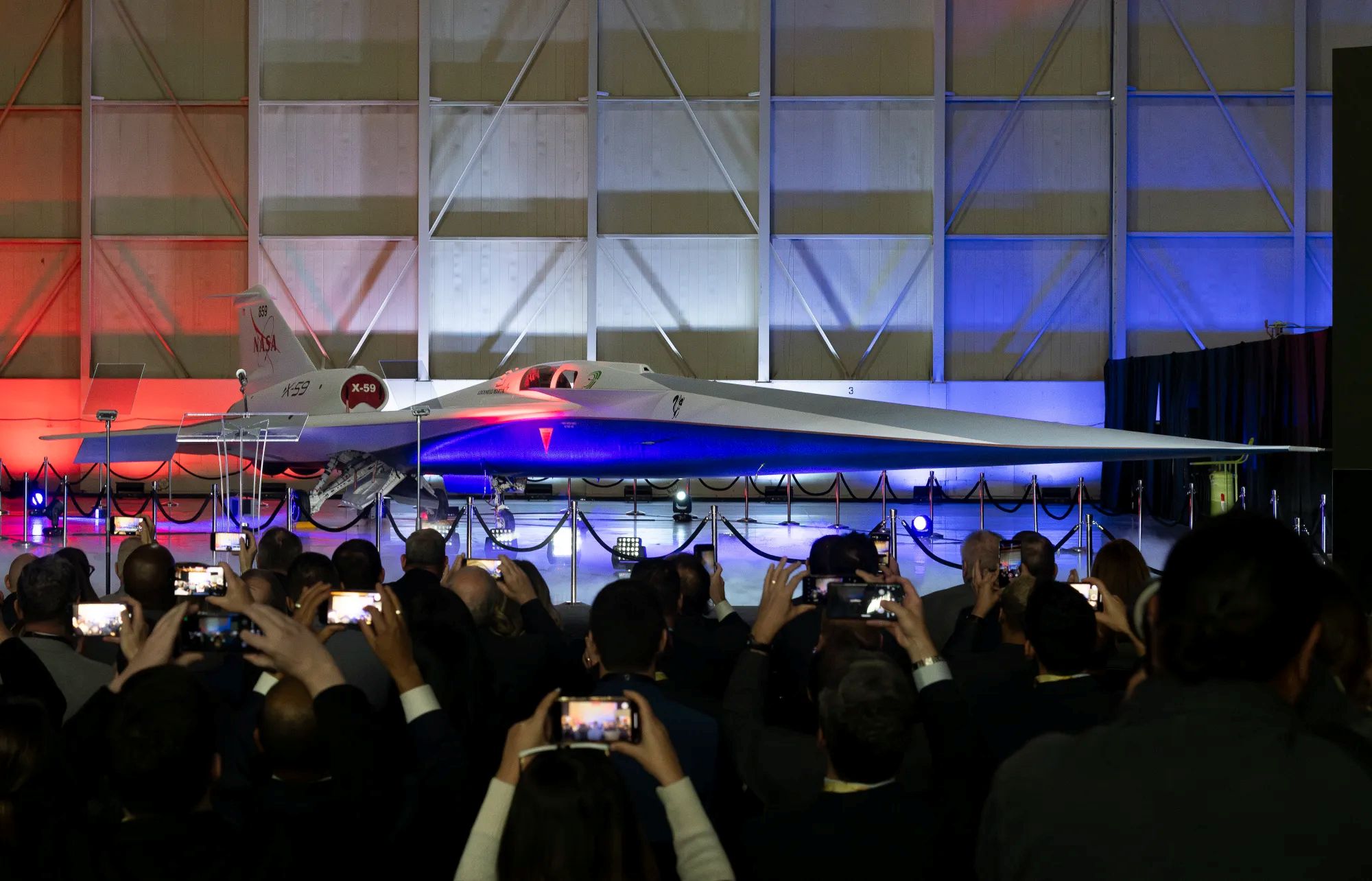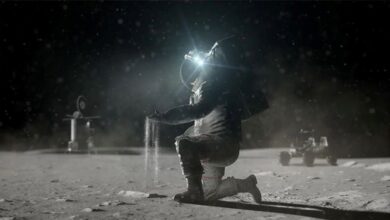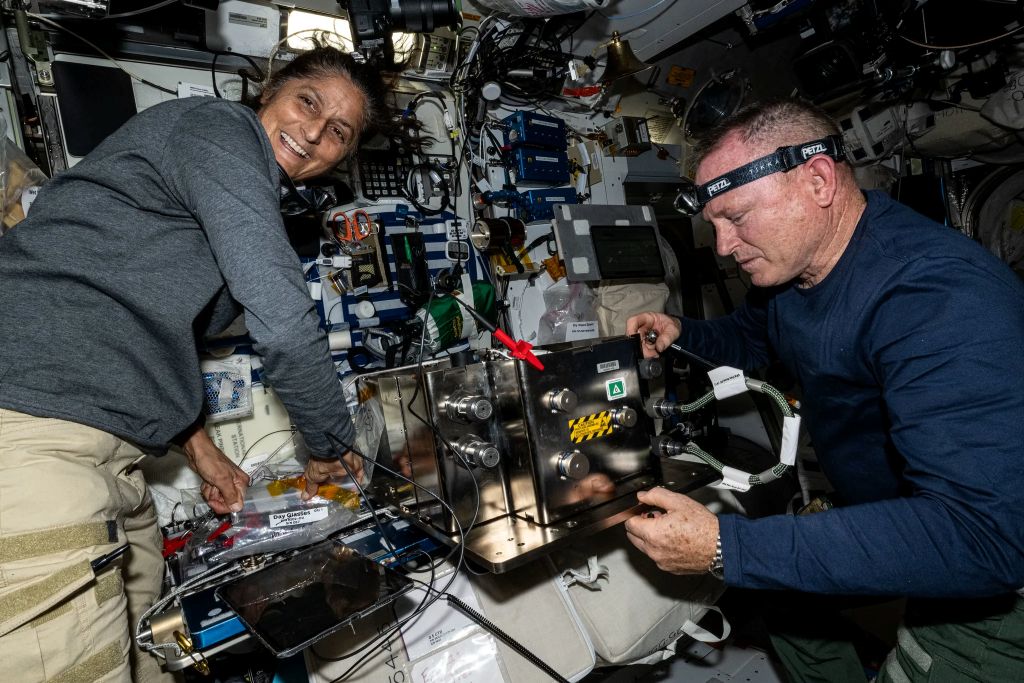NASA X-59 Unveiled During Rollout Ceremony

A climactic curtain drop reveals the newly painted red, white, and blue X-59 aircraft during its rollout ceremony on Jan. 12, 2024, at Lockheed Martin Skunk Works in Palmdale, California – a major milestone before its first flight.
A long-standing aviation tradition, rollout ceremonies celebrate years of technical achievements. In the case of the X-59, not only does it celebrate groundbreaking technical work, but it honors the brilliant minds behind the research, development, and construction that went into a one-of-a-kind supersonic research aircraft.
The X-59 is a research tool in NASA’s Quesst mission designed to prove quiet supersonic flight is possible. Through Quesst, NASA will fly the aircraft over select U.S. communities, working with them to collect data. NASA will provide that data to regulators so they may consider writing new sound-based rules that would amend the current ban on commercial supersonic flight over land.
Next up, the X-59 team will conduct a series of integrated ground tests, including engine runs and taxi tests, to prepare for the aircraft’s first flight.
Image Credit: NASA/Steve Freeman
Text Credit: Sasha Ellis
Read this story in Spanish:
El avión X-59 de la NASA fue revelado durante una ceremonia
Una caída culminante del telón revela el avión X-59 recién pintado de rojo, blanco y azul durante su ceremonia de lanzamiento el 12 de enero de 2024 en Lockheed Martin Skunk Works en Palmdale, California, un logro importante antes de su primer vuelo.
Las ceremonias de lanzamiento vienen de una larga tradición en la aviación donde se celebran años de logros técnicos. En el caso del X-59, no sólo se celebra el trabajo técnico innovador, sino que también honra a las mentes brillantes detrás de la investigación, el desarrollo y la construcción de un avión de investigación supersónico único en su tipo.
El X-59 es una herramienta de investigación de la misión Questt de la NASA diseñada para demostrar que es posible un vuelo supersónico silencioso. A través de Questt, la NASA volará el avión sobre comunidades seleccionadas de los Estados Unidos y trabajará con ellas para recopilar datos. La NASA proporcionará esos datos a los reguladores para que puedan redactar nuevas reglas de los vuelos supersónicos comerciales sobre tierra considerando los niveles de ruido en lugar de la velocidad.
A continuación, el equipo del X-59 llevará a cabo una serie de pruebas en tierra integradas, incluidos funcionamientos del motor y pruebas de rodaje, para prepararse para el primer vuelo del avión.
Crédito de la foto: NASA/Steve Freeman
Crédito de texto: Sasha Ellis, NASA
Traducido por: Jessica Arreola, NASA





